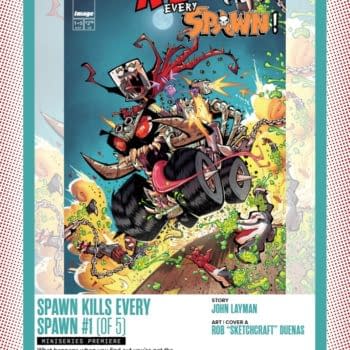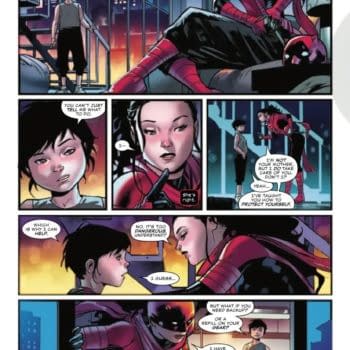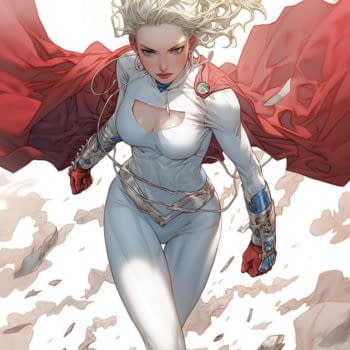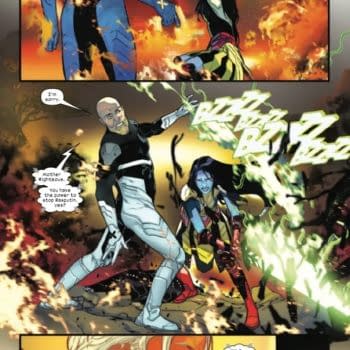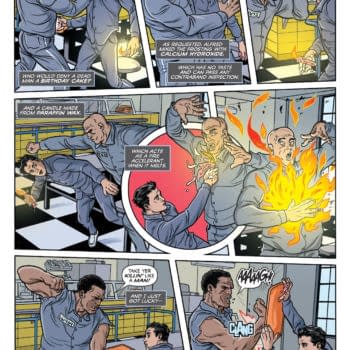Posted in: Comics, Recent Updates | Tagged: Ari Handel, Comics, darren aronofsky, entertainment, Niko Henrichon, noah
The Graphic Novel Of Aronofsky's Noah Is Otherworldly Thanks To Handel And Henrichon
Dave Wallace writes for Bleeding Cool:
Darren Aronofsky's Noah movie has done surprisingly well for a film that some had written off as a turkey long before it was even released. It currently stands as the fifth highest-grossing movie of the year so far, and received a largely positive critical reaction to boot.
Well, I can only hope that the success of the movie translates into a similar reception for the accompanying graphic novel by Aronofsky and co-writer Ari Handel – because their collaboration with artist Niko Henrichon has produced one of the most original, thought-provoking and compelling comics that I've read in quite some time.
Noah was originally released in French – published in separate 'album' style books by Belgian publisher Le Lombard – and played a significant role in securing funding for the film version to be made in the first place. Its English-language release, however, comes at the same time as the movie, and Image Comics has done a sterling job in presenting the material: collecting all four books into a single, beautiful oversized hardcover edition that really allows Henrichon's work to shine. Because as much as this adaptation of the well-known biblical epic is the work of Aronofsky and Handel's imaginations, its the way in which these ideas are realized by the artist that gives them their real impact.
From the very start of the book, there's an otherworldiness about Henrichon's art that immediately helps to distinguish it from other hoary old retellings of the well-worn story. His greatest achievement is creating a unique sense of time and place for this tale, liberating it from the shackles of Sunday-school storytelling and instead recasting it in a harsh, unrecognizable environment that could just as easily be a dystopian future as a long-forgotten past.
The rocky, desolate terrain of Henrichon's world is punctuated with twisted metal sculptures and derelict structures that give the story a post-apocalyptic, end-times feel. And when it comes to more populated areas, the buildings, communities and clothing are just as alien as anything you've seen in Star Wars (in fact, one sequence in particular has a real Mos Eisley vibe to it).
This timeless, otherworldly quality helps to prepare us quite nicely for some of the other outlandish ideas that Aronofsky and Handel have woven into their version of the Noah myth. Because although there are lots of places in which the book sticks close to scripture – including some lovely, sometimes-abstract sequences lifted from earlier in the book of Genesis – there are also places where the story gets far more outlandish.
Most notably, this involves the realization of the fallen angels known as the Watchers (and no, not as a bunch of bald guys in skirts who live on the moon – although that would have been interesting). The sequence in which the angels fall to Earth is one of the most stunning in the book, but even more arresting than that is the form that's ultimately taken by their terrestrial form: huge, hulking, four-armed Harryhausen-esque creatures that assist Noah in his quest.
It becomes a common theme throughout the book that Henrichon is able to match the fantastic, larger-than-life elements of Noah's story with visuals that demand you sit up and take notice. Noah's concerns over the casualties that would be caused by the great flood are encapsulated by a disturbing dream sequence that culminates in a horrific undersea splashpage filled with death and despair. The ark itself is a hulking, functional craft that bears more resemblance to 2001's monolith than the traditional giant boat so often associated with this story. And Methuselah's appearance is contrasted with the realistic approach to other characters by giving him an exaggerated, caricatured agedness that makes him feel more like something out of Frank Miller's 300 than a biblical character. Even Noah himself is given heroic stature by the addition of a red cloak that almost subliminally calls to mind Superman's cape.
Over and over again, the comics version of Noah surprises you with its ability to cast a familiar story in a new light, and it ends up feeling like a fresh and unique reading experience as a result. Hopefully, the success of the Noah movie will be more than matched by its comics counterpart, because this is far more than just a solid retelling of a well-known tale: it's a brilliant fusion of writers and artist – and that's what great comics are all about.














